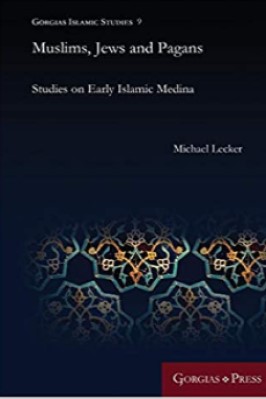Muslims, Jews, and Pagans: Studies on Early Islamic Medina

| Muslims Jews And Pagans |
| Michael Lecker |
| 99 |
| |
| PDF Direct Download Link |
| Click for Hard Copy from Amazon |
MUSLIMS JEWS AND PAGANS – Book Sample
About the Book – MUSLIMS JEWS AND PAGANS
MUSLIMS JEWS AND PAGANS text examines the available source material on the `Uliya area south of Medina on the eve of Islam and at the time of the Prophet Muhammad. It provides some of the necessary background for the study of the Prophet’s history by utilizing, in addition to the Prophet’s biographies, various texts about the history, geography and inhabitants of this area.
The topics include the landscape, notably the fortifications, the delayed conversion to Islam of parts of the Aws tribe, the Quba’ village and the incident of Masjid al-Dirar in 9 A.H. The three appendices deal with historical apologetics, pointing to the social context in which the Prophet’s biography emerged during the first Islamic cent…..
INTRODUCTION
Scholars of Islam have in recent years grown accustomed to a constant flow ofArabic texts which were hitherto only available in manuscript form.1 For example, Ibn al-Kalbı’s Jamharat alnasab, which until lately had been available solely in manuscript form, appeared almost simultaneously in three diifferent editions (one being incomplete).2 Ofgreat importance is the recent publication ofa facsimile ofIbn ‘Asakir’s Ta’rıkh madınat Dimashq and of the extant parts of Ibn al-‘Adım’s Bughyat al-talab fı ta’rıkh lfalab.
These books preserve many records copied from earlier compilations, now lost, which can no doubt change the form ofscholarship in a number ofkey areas, above all in those of Umayyad history and the history ofPalestine under the Muslims. 3 Mention should be made of the recent publication in Cairo of Muqatil b. Sulayman’s Tafsır.
are used further on in this monograph. Finally, ‘Umar b. Shabba’s Ta’rıkh al-Madına al-munawwara only recently became available.5 In short, thanks to this new wave of publications we are now bet ter equipped than ever before to study the early Islamic period.
The fresh crop of texts includes much which is unknown to us on the life of the Prophet Mu};ı.ammad, as indeed on many other aspects of early Islamic history.6
Besides the reconstruction and interpretation of texts, this monograph includes aspects of historical-geography, prosopography and several observations concerning the literary properties of the historical tradition. The results take us some way towards a better understanding of Medina and its society on the eve of the Hijra and during the early Islamic period.
At the heart of the monograph’s four chapters is the constant of the elevated area south of Medina, which in the early Islamic period was called al-‘Aliya or al-‘ Awalı. 7
Focusing on the area rather than on events and reading the texts in conjunction with the map of Medina helps clarify a number of obscure points. The major events in the life of the Prophet, such as the Hijra and the main battles, always remain in the background. Yet, it should be emphasized that this is by no means a history; rather, it is an introductory study investigating in depth certain aspects of the Prophet’s Medinan period and the Islamic literature dealing with it.
Some assumptions underlying my work
A few assumptions, which to some extent overlap, underlie my work on the Prophet Muhammad in this monograph and else where.8
THE IMPORTANCE OF NON-SiRA SOURCES
On the whole, the sıra (i.e., sıra compilations and sıra material in other sources) is unsatisfactory as the sole source of information on the Prophet and his time. While its outline of major events may perhaps remain unchallenged in the future, other sources must be consulted.
To demonstrate the importance of non-sıra material we may refer to the events leading up to the Hudaybiyya Treaty between the Prophet and the Quraysh (end of 6 A.H.): it is only in a later legal work that we find a precious report on a treaty between the Jews of Khaybar and the Meccans which was abrogated by the Hudaybiyya Treaty.
In order to secure himself from a Meccan attack from behind during his imminent charge on Khaybar, the Prophet was willing to grant the Meccans important concessions in return for a truce. This truce contradicted the Khaybar-Mecca Treaty and in e:ffect abolished it. The report helps make the whole a:ffair, and the Prophet’s concessions in
To read more about the Muslims Jews And Pagans book Click the download button below to get it for free
Report broken link
Support this Website
for websites